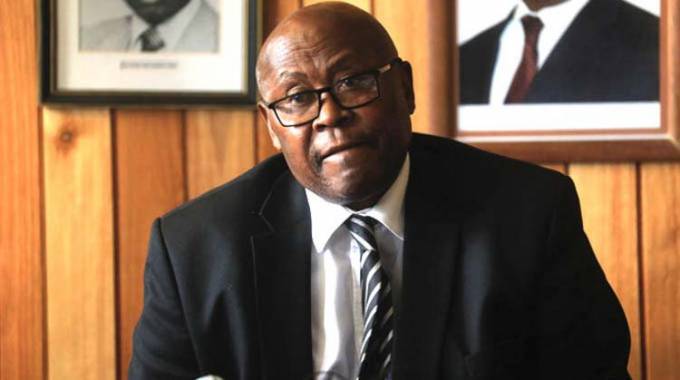
The Sunday Mail

Harmony Agere
A DISPROPORTIONATELY high number of schools — 87 — especially in rural areas, recorded zero percent pass rates in the 2019 Zimbabwe School Examinations Council (Zimsec) Grade Seven exams, compared to 45 schools that had 100 percent pass rates, suggesting there might be need for targeted interventions in the affected schools.
A zero percent pass rate means all pupils that would have sat for the examinations failed.
A ranking compiled by Zimsec of the 5 265 schools that had pupils who sat for the exams, which are critical for passage to secondary school, indicate that predominantly urban schools such as Aspindale Park, Divaris Makaharis Junior and Dominican Convent — all located in Harare — excelled, while rural schools such as Zindele, Koodoovale, St Theresa’s and River Block underperformed.
Zindele, Koodoovale and River Block are Gwanda schools while St Theresa’s is in Insiza. They belong to Matabeleland South province.
In fact, all 10 worst-performing schools are from the province.
Resource gap
Educators believe the marked discrepancy in performance between rural and urban areas might possibly connote the uneven distribution in both human and material resources.
“There is no stability among rural teachers because they are always seeking for better (working environments),” says Zimbabwe Teachers’ Union (ZIMTA) chief executive officer Dr Sifiso Ndlovu.
“This deters continuity in the learner-teacher relationship, which results in poor results in the long run.”
On the other hand, urban schools, mission schools and formerly Group A and B schools are generally believed to have access to books, internet and high-quality teachers, hence their relatively outstanding performances.
Government is now searching for answers in order to come up with both an explanation and the appropriate intervention to lift the standard of education in the affected schools.
Primary and Secondary Education Minister Ambassador Cain Mathema said there is need for informed scientific solutions to correct the anomaly.
He, however, indicated that bad results should not be compartmentalised into the rural-urban binary, but should be tackled as a problem in schools.
“All our children should pass, whether they are in the urban or rural areas — we want them to pass,” he said.
“And as a ministry, we are in the process of finding out why they failed. We want to find out from headmasters, inspectors, district education officers, from everyone who is involved in the education of our children.
“We can look for someone to blame but all of us, from Government, parents, school development committees (SDCs), Members of Parliament (MPs) and teachers, have a part to play.
“We cannot expect our students to perform better when teachers are sharing houses, when the students are learning in mud-and-pole blocks. We have a collective responsibility to address these things.”
This year’s national pass rate showed a marginal drop of 5,2 percent from 52,1 percent in 2018 to 47 percent.
The total number of candidates who sat for the 2019 Grade Seven examination was 323 207, representing a 1,1 percent drop from 326 685 candidates in October 2018.
Indigenous languages recorded the highest subject pass rate, with Shona and Ndebele recording pass rates above 80 percent, while Kalanga, Xichangana and Tshivenda had pass rates above 70 percent.
The pass rates for Tonga and Nambiya stood at 60 percent.
Sesotho, which was assessed for the first time, had a 68,5 percent pass rate.
Investment
Educationist and University of Zimbabwe lecturer Dr Peter Kwaira said poor results were a sign of an unstable economic environment which is affecting both educators and learners.
“As an academic, the most fundamental factor for good results is a conducive environment. The environment affects all participants; that is, parents, pupils and teachers,” he said.
“It is not a blame game, but the social welfare of all participants has a negative impact on Grade Seven results. There is need to beef up resources at all primary schools so that we invest in future generations.”
He urged parents to take time to assist children with homework and other school work.
“Some parents are stressed to the extent that they cannot assist their children in doing homework, which is vital for the pupils in the long run.
“As a nation, we should all work together to improve the education environment.”
Meanwhile, Ngangu Primary School, which was forced to suspend classes after being turned into a temporary shelter for people displaced by Cyclone Idai in Chimanimani (Manicaland) early this year, performed above expectations to record a 69 percent pass rate.
Eighty-two pupils out of the 119 who sat for the exams passed.
The feat has widely been regarded as remarkable given the trauma that affected the community following the weather calamity that has since been described as the worst-ever weather-related disaster to affect the Southern Hemisphere.
During the disaster, students not only missed classes but came face to face with death and destruction as Cyclone Idai tore through Chimanimani.
Schools had to be closed early to give way to rescue and recovery efforts in the wake of the disaster.
Although classes eventually resumed, some students lost parents and guardians, uniforms and learning materials in the floods, greatly jeopardising their studies.



